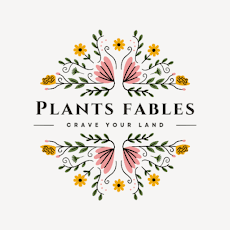Create a vegetable garden yourself!
It's beautiful weather, making it the ideal time to work in the garden. If you want to eat from your own garden this summer, now is the perfect time to start! Now that the night frost is mostly over, your vegetable and fruit seedlings can go into the garden. However, you first need a suitable place to grow these plants. Also, after planting, there are a few things that need to happen before you can eat any of your own harvest.
What's the best place to start? Here We’ll explain that to you!
Plant a vegetable garden. It all starts with planting a vegetable garden. In this blog we will explain to you the best way to do this in a step-by-step guide. We recommend starting with a vegetable garden box. This gives you a nice overview and makes it easy to build yourself!
Choose a sheltered spot where the sun shines about half the day.
Think about how many plants you want to grow and adjust the size of the vegetable garden box accordingly.
Build a vegetable box yourself or, for convenience, buy a ready-made vegetable garden box. A vegetable box on legs, i.e. a raised vegetable garden, is also possible.
Fill the vegetable garden box with soil, for example organic vegetable garden soil. This way you ensure the ideal breeding ground for your fruit and vegetables.
The plants of the vegetable garden
The first step has now been taken: your vegetable garden box is ready to use! But what happens next? Below we will give you more information about the plants you can plant in your vegetable garden and when it is best to do so.
When should you sow in the vegetable garden? When to sow something in your vegetable garden depends on the type of plant you have in mind. That's why it's useful to get information from a sowing calendar. Then you will know when the optimal time is for your plants to grow and avoid disappointment. For example, you can plant lettuce, endive and spinach in April/May, but you have to wait until late summer to plant cauliflower and certain types of lettuce.
What plants should you start with in the vegetable garden? If this is your first time starting a vegetable garden, it is recommended to start with simple plants such as zucchini, mint, parsley or strawberries. However, keep in mind that strawberries and mint can become overgrown. Therefore, plant them in a separate vegetable box or pot, otherwise your garden will be full of them in no time. Also read the sowing instructions carefully to find out how much spacing the plants need.
Which plants go together in a vegetable garden? You can't just put all the plants next to each other. Some plants strengthen each other, while others make life difficult for each other. For example, carrots and onions are a good combination, but it doesn't make sense to place carrots and beetroot next to each other. It would also be better if you don't plant lettuce and parsley too close together. Take a good look at which plants go best together so that you have a beautifully blooming vegetable garden.
Start indoors: To increase the chance of success, it is recommended to germinate your vegetable garden plants indoors first. Only when the plants are large enough do you put them in your new vegetable garden box. Larger plants are stronger and more resistant to outdoor life, so you have more chances of a successful harvest. When can you take the plants outside? This is also stated in most sowing calendars.
Caring for the vegetable garden:
Your vegetable garden box is now full of plants and is already in your garden. Now the best part begins, because your plants will now really grow! Your vegetable garden actually needs some attention from you every day. If you do something in the vegetable garden every day (or every few days), it's not that much work at all. Above all, remember to weed regularly and make sure the plants get enough water.
Vermin in the vegetable garden
The biggest challenge with a vegetable garden is protecting your fruits and vegetables from pests long enough for you to eventually eat them yourself. It's quite frustrating when you have been lovingly tending your vegetable garden and you end up seeing your almost full-grown eggplant hanging, eaten by snails. Natural Ways to Protect Your Vegetable Garden. There are many tricks to protect your vegetable garden from pests. For example, you can place certain plants to deter pests. Tagetes (marigold) has the nickname “stinker” because of its not so pleasant smell. However, this smell also keeps eels, white tomato flies and ants at bay. Snails also don't like strong smells, but garlic seems to help against them. A garlic plant would not be out of place in your garden.
Snails are a persistent problem for a vegetable garden anyway. A strip of sharp sand or shells around your vegetable garden will help keep these omnivores away. Another natural way to protect your plants is to spray them with nettle tea. You can also do this as a preventive measure.
Cats in the vegetable garden
Do you have problems with cats in the vegetable garden? Cats love loose soil because they can dig in it so easily. You make the garden less attractive if you stick stakes into the ground.
Of course, there is always the possibility that you have a stubborn pest in your garden. It is important that you start fighting pests early in the season, actually in March. If you have really tried everything, you can ultimately also use biological pesticides. For the health of your plants, avoid the use of chemical pesticides. After a few months, the time has come for the harvest! Are you motivated to start your own vegetable garden? So you too can eat wonderfully from your own garden this summer!







0 Comments